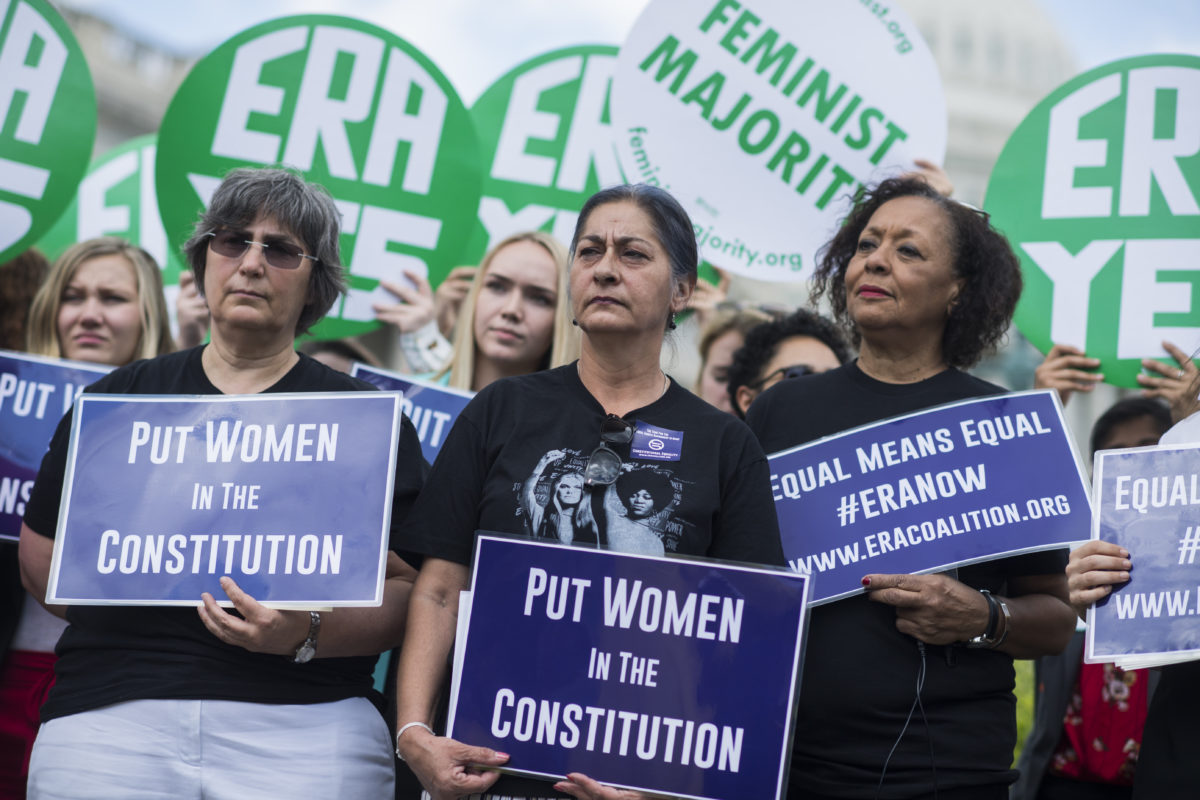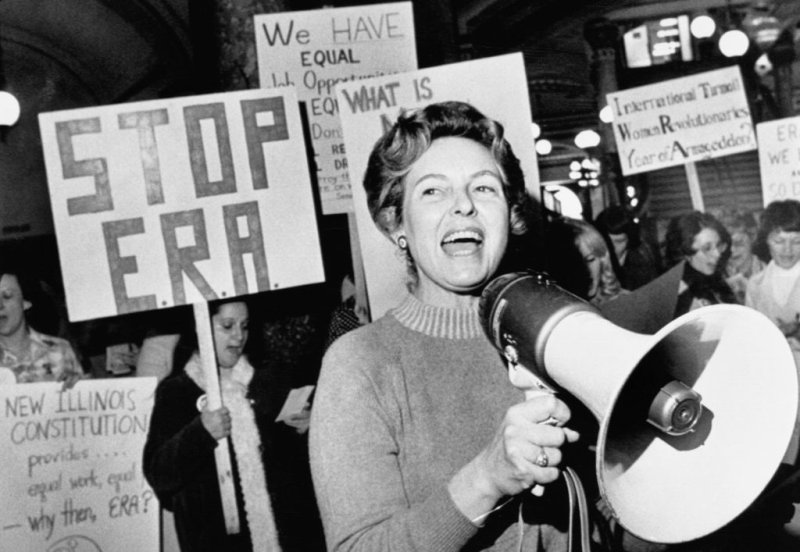Sydney Hamilton, MPA Staff Writer, Brief Policy Perspectives
When discussions surrounding feminism occur, the conversation often turns to the Equal Rights Amendment (ERA). While it may seem like the ERA would be universally supported and desired by all feminists, this is not the case. A feminist, as used in this article, is someone who supports women’s rights regardless of a specific ideology. Feminists argue both for and against the ERA. This article discusses the most commonly used arguments surrounding the ERA.
What is the ERA?
The ERA is a proposed Constitutional amendment. The text is very concise:
Section 1: Equality of rights under the law shall not be denied or abridged by the United States or by any State on account of sex.
Section 2: The Congress shall have the power to enforce, by appropriate legislation, the provisions of this article.
Section 3: This amendment shall take effect two years after the date of ratification.
The Alice Paul Institute describes the ERA as a proposed amendment to the U.S. Constitution designed to guarantee equal legal rights for all citizens, regardless of sex. The ERA seeks to end legal distinctions between men and women and treat all citizens the same, regardless of gender. It is important to note that the ERA does not explicitly mention men or women, so this could be interpreted as including people who are gender nonconforming. However, there has been hardly any formal discussion on this topic from a legislative perspective.
History of the ERA
The ERA was first introduced in 1923 by Alice Paul, a socialist, suffragist, feminist, and women’s rights activist who led the movement to ratify the 19th Amendment. The legislation was then introduced for debate in every session of Congress for 50 years. On March 22, 1972, the ERA passed the Senate and the House of Representatives by the required two-thirds majority and headed to the states for ratification.
To date, 35 of the necessary 38 states have ratified the ERA. The deadline to receive 38 ratifications was June 30, 1982, but a legal fight has been developing to determine if the original 35 ratifications would stand if three more states ratified the amendment in the coming years. Nevada passed the ERA in 2017, and Illinois did the same in 2018. The newly-elected Virginia legislature has promised to introduce this legislation in the upcoming session, potentially making Virginia the critical 38th state in the ratification effort. It will likely be left to the Supreme Court to decide if these additional ratifications are legitimate.
Arguments for the ERA
In 1973, future Supreme Court Justice Ruth Bader Ginsburg wrote a summary of the arguments in favor of the ERA:
The equal rights amendment, in sum, would dedicate the nation to a new view of the rights and responsibilities of men and women. It firmly rejects sharp legislative lines between the sexes as constitutionally tolerable. Instead, it looks toward a legal system in which each person will be judged based on individual merit and not on the basis of an unalterable trait of birth that bears no necessary relationship to need or ability.

A major argument in favor of the ERA is that it would guarantee that all citizens, regardless of sex, are treated equally under the law. Currently, the 14th Amendment gives equal rights to all citizens but does not explicitly mention women. The 19th Amendment explicitly gives women equal voting rights relative to men but does not broaden its scope beyond that issue. An amendment combining the two — guaranteeing women equal rights with no caveats — is considered necessary by proponents of this perspective.
Shirley Chisholm argued in front of Congress that the ERA would benefit both men and women because it would negate laws that benefit only women. For example, women would be required to sign up for the Selective Service under the ERA, adhering to the same standard as men. She argued that women are held to higher standards when it comes to volunteering for military service, whereas men are not. The full quote is below:
The selective service law would have to include women, but women would not be required to serve in the Armed Forces where they are not fitted any more than men are required to serve. Military service, while a great responsibility, is not without benefits, particularly for young men with limited education or training. Since October 1966, 246,000 young men who did not meet the normal mental or physical requirements have been given opportunities for training and correcting physical problems. This opportunity is not open to their sisters. Only girls who have completed high school and meet high standards on the educational test can volunteer. Ratification of the amendment would not permit the application of higher standards to women.
The ERA would also set a clear federal judicial standard for deciding cases of discrimination on the basis of sex. This amendment would give the federal courts a precedent when deciding such cases, by codifying equality regardless of gender in the Constitution. Theoretically, this could result in more legal victories for women’s rights down the line, and would also provide a strong legal defense against a rollback of women’s rights.
Most laws that protect women against discrimination (such as the Pregnancy Discrimination Act or the Equal Pay Act) can be undermined or overruled by another bill passed by a simple majority of Congress. A Constitutional amendment solidifies the right of women not to be discriminated against on the basis of sex, and would theoretically be protected from legal challenges. An example of this occurring in the case of racial discrimination is Brown v. Board of Education of Topeka. The 14th Amendment was the basis of the decision that separate was inherently unequal, overturning Plessy v. Ferguson. The decision in Plessy also rested on the basis of the 14th Amendment; this will be discussed in more detail later.
Arguments Against the ERA
One common argument against the Equal Rights Amendment is the fact that the U.S. already has the 14th Amendment, which states:
All persons born or naturalized in the United States, and subject to the jurisdiction thereof, are citizens of the United States and of the state wherein they reside. No state shall make or enforce any law which shall abridge the privileges or immunities of citizens of the United States; nor shall any state deprive any person of life, liberty, or property, without due process of law; nor deny to any person within its jurisdiction the equal protection of the laws.

A woman is a citizen, so she falls under this category as much as anyone else does. Laws like the aforementioned Pregnancy Discrimination Act and the Equal Pay Act protect the individual rights of women and address the specific challenges women face.
Another major argument against the ERA is that the ratification of the ERA would mean laws cannot be passed to protect men and women differently. The ERA states, “equality of rights under the law shall not be denied or abridged by the United States or by any state on account of sex,” implying all laws must affect men and women equally. That standard is present in legislation surrounding racial discrimination. An example is present in Adkins v. Children’s Hospital from 1923. In this case, the Supreme Court ruled that it was unconstitutional to guarantee women a minimum wage because earlier, the court had ruled that men could not be guaranteed a minimum wage. The court based its decision on the 19th Amendment.
But, like in the case of racial discrimination, the ERA has the potential to backfire on the greater mission of the women’s rights movement. If the ERA is ratified, it would be more difficult to pass laws that specifically protect women. The aforementioned Plessy v. Ferguson decision hinged on the 14th Amendment. In a 7-1 decision, the Supreme Court ruled that as long as the separate facilities were equal, they would satisfy the 14th Amendment. This same line of thinking could be applied to issues of gender. The 14th Amendment formally recognized a group of marginalized citizens as having rights, and it was used against that same marginalized group of citizens; proponents of this perspective worry that the same thing could happen to women if the ERA is enacted.
Finally, some are concerned that the ERA could also foster a false sense of security among women in the women’s rights movement. The passage of the ERA could be seen as the end of a long journey, when the work was just beginning. Laws cannot change the world if attitudes and practices do not change too. The focus would need to shift to real-world implementation of this amendment to ensure the ERA is implemented the proper way.
Conclusion
The ERA is overwhelmingly popular among Americans: 94% of citizens say they support making the ERA the newest constitutional amendment. However, the implications of ratifying this amendment are worthy of further discussion. The feminist movement has grown and matured since the ERA was first introduced in 1923, mere years after the ratification of the 19th Amendment. In the 100 years since women won the right to vote, feminist leaders have started to think critically about the social and legal implications of making men and women truly equal in the eyes of the law.
